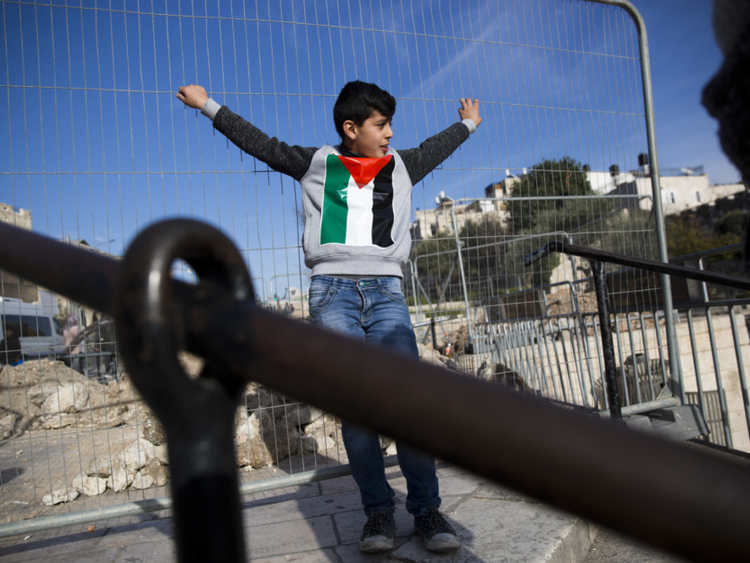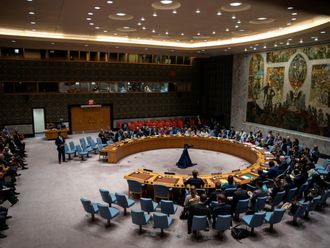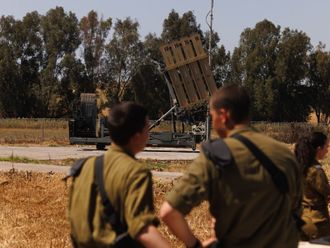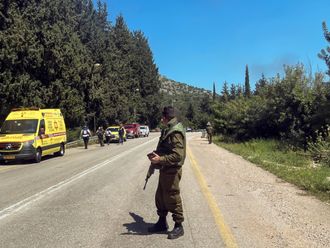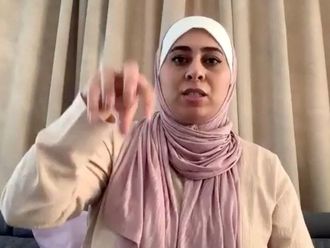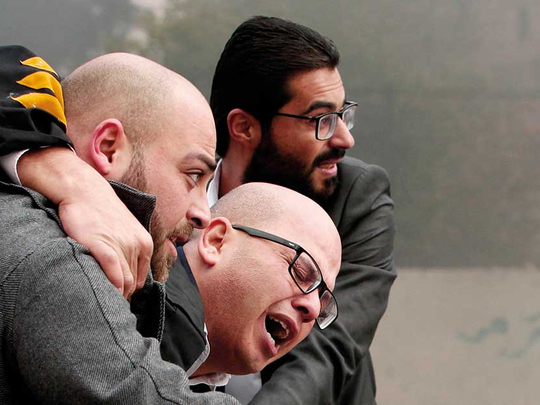
Occupied Jerusalem: In Ras Khamis, a neglected, restive Palestinian neighborhood of Occupied Jerusalem where President Donald Trump’s recent recognition of the holy city as Israel’s capital has been met by cynicism, defiance and new fears that Palestinians will increasingly be marginalised.
Trump’s pivot on Occupied Jerusalem “is regrettable, saddening and unfair,” said Yasser Khatib, 42, who runs a supermarket across the street from the barrier that separates several Palestinian neighborhoods of Occupied Jerusalem from the rest of the city.
Khatib’s family roots go back generations.
Jerusalem is considered Israeli-occupied territory by the international community and Palestinians want it as the capital of their future promised state.
On June 5, 1967, Israeli forces launched a devastating pre-emptive attack on East Jerusalem and the West Bank, as well as Egypt’s Sinai and the Syrian Golan Heights.
Within in days it had illegally seized these territories and by June 27 it had adopted a law extending its own laws and administration to the occupied Palestinian Territories, including East Jerusalem where it unilaterally extended the municipal borders of West Jerusalem to cover the newly occupied East Jerusalem.
Even though Israel’s founding fathers never claimed East Jerusalem, the city was annexed by Israel in 1980 under Prime Minister Menachem Begin, an act internationally condemned and declared invalid by the United Nations.
But this open aggression was only part of the way that the Israeli occupiers have extended their authority over the Old City through the decades. They have worked hard to drive out the city’s Palestinian inhabitants, and erase the city’s Palestinian and Muslim identity.
Since then, Israel has been implementing policies to change the facts on the ground — particularly in Occupied Jerusalem.
Despite Israel’s efforts to kick Palestinians out and make their lives difficult their numbers could reach 44 per cent by 2040, according to the Occupied Jerusalem Institute for Policy Research think tank.
“On the ground, Israel is not investing much in developing the Palestinian neighborhoods of Occupied Jerusalem,” said Yitzhak Reiter, in charge of the Jerusalem Institute’s mapping of the physical and social infrastructure of Palestinian neighborhoods.
“The city is divided, with two different transport systems, two different policies on building and construction.”
For now, 79 per cent of Palestinian residents fall below the poverty line, compared to 27 per cent of Jews, according to Jerusalem Institute figures.
An Israeli Cabinet minister recently floated a plan that would place tens of thousands of Palestinians who live inside the municipal boundaries but beyond the separation barrier under a new Israeli-run municipality, thus sharply reducing the number of Palestinians counted as Jerusalemites.
These areas, including Ras Khamis, have seen apartment towers rise in recent years.
Desperate Palestinians who are rarely granted building permits by Israeli authorities moved there in large numbers, despite fears that they would eventually be “zoned out” of Occupied Jerusalem.
Israel often demolishes Palestinian homes built without permits.
Since 1967, Israel has illegally built large neighbourhoods for Jews in the east, now home to 212,000 Israeli colonists.
Palestinian Esmail Siam said a one-story home he built on his land for two adult children was demolished by Israel twice in 14 months, on grounds that he did not have a building permit.
The plot faces large construction sites for Jewish neighborhoods across a ravine.
“They want to expel us from the city,” said Siam, 54, standing near patches of floor tiles left from the demolished house.


